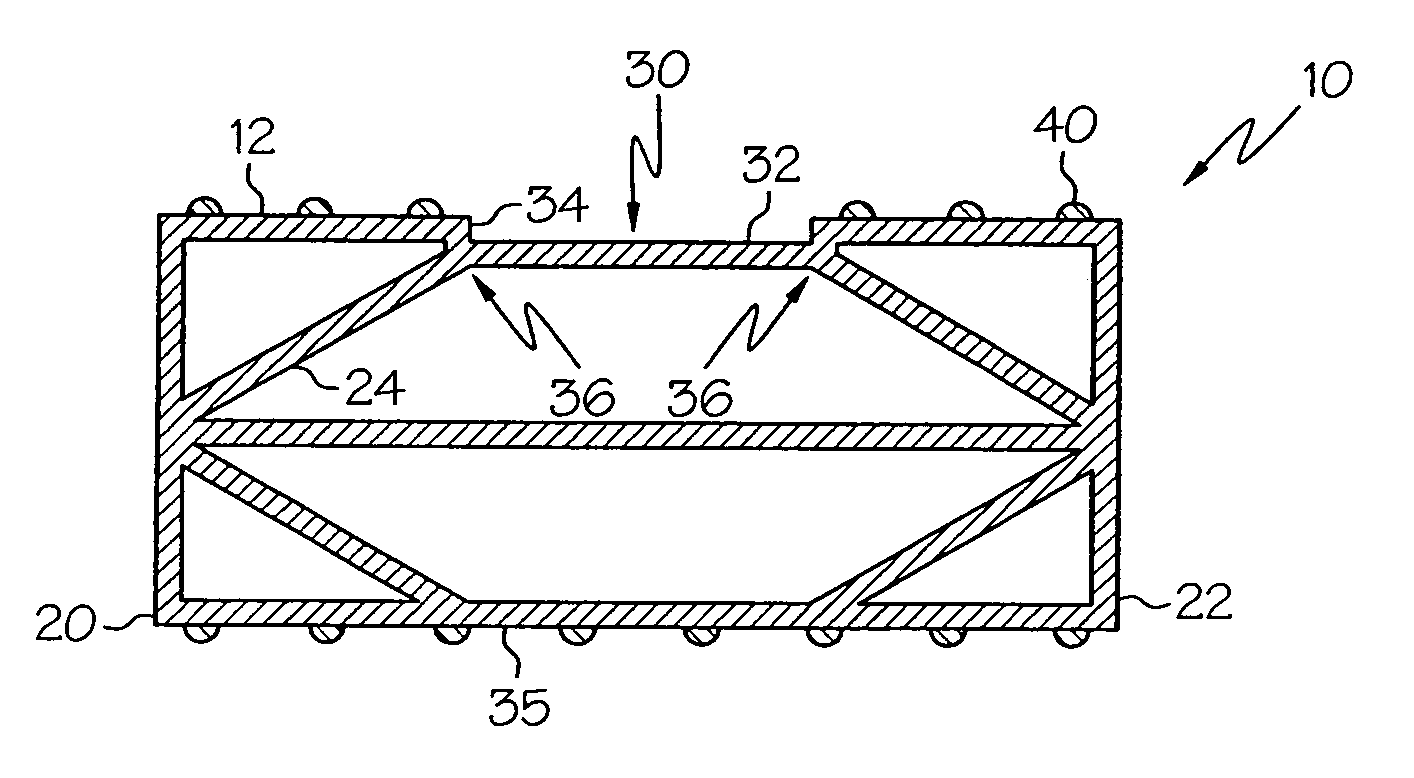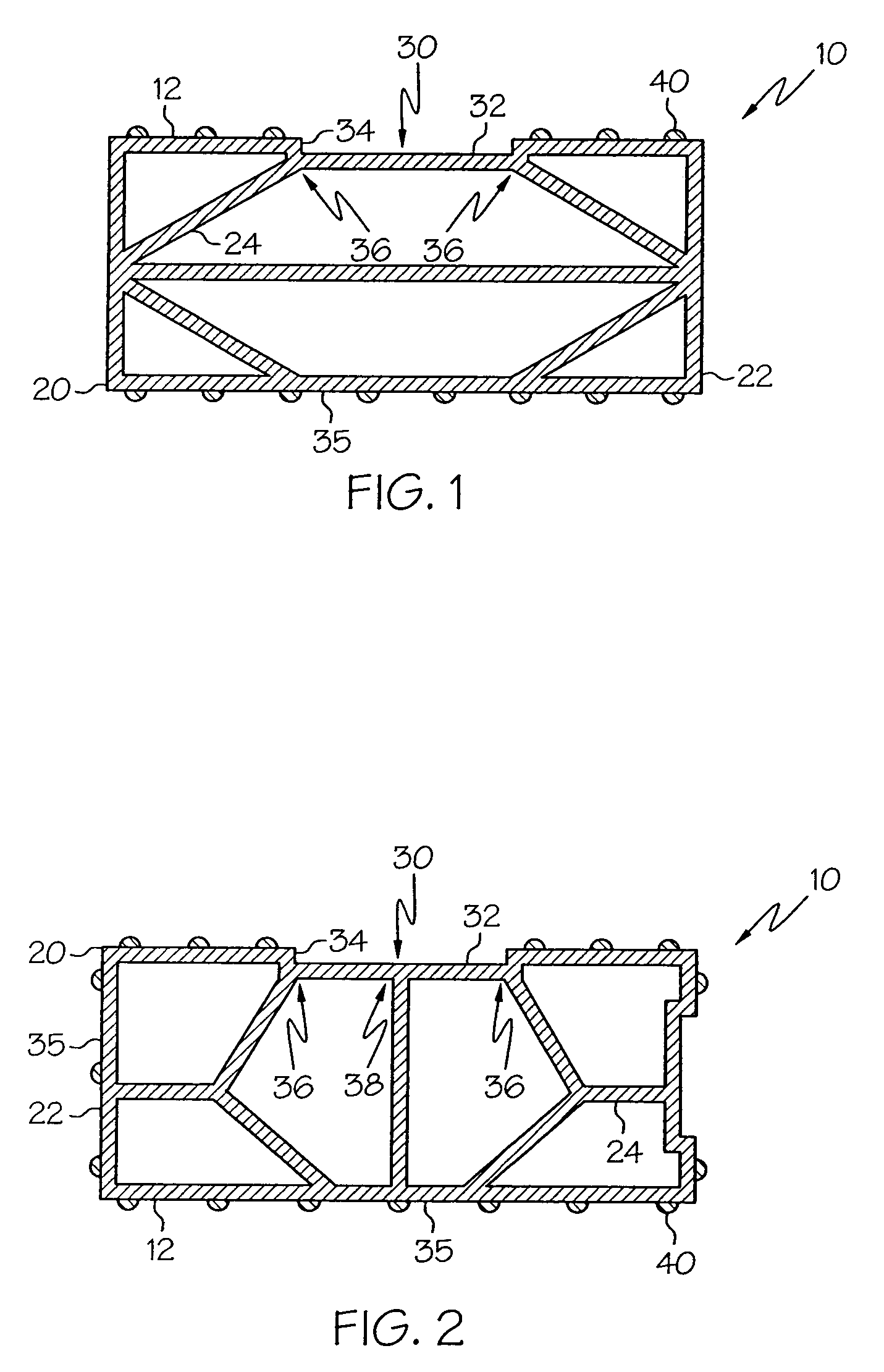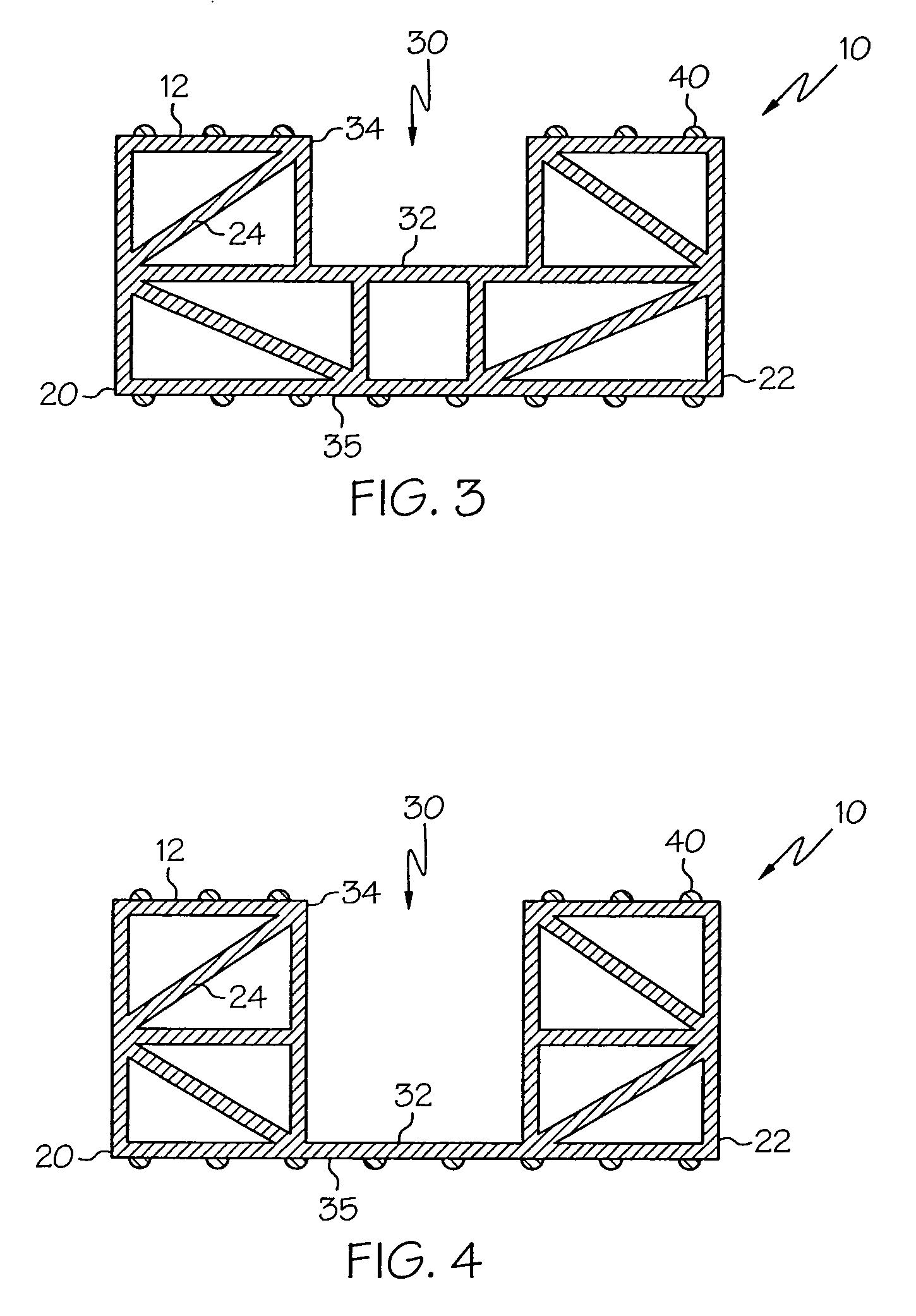Article-packaging structure
- Summary
- Abstract
- Description
- Claims
- Application Information
AI Technical Summary
Problems solved by technology
Method used
Image
Examples
Embodiment Construction
[0014]Referring collectively to FIGS. 1–5, article-packaging members 10 according to the present invention are illustrated in detail. Each article-packaging member 10 is preferably manufactured in an extrusion process and, as such, defines an extruded cross section extending along its entire length. The article-packaging members may be formed from any plastic material but are preferably formed from extrudable plastic materials because the design of the present invention is well-suited for manufacture by an extrusion process. Preferred materials include polyvinyl chloride (PVC), low or high-density polyethylene or polypropylene, acrylics, polycarbonates, and thermoplastic elastomers. As will be appreciated by those familiar with the art of extrusion, an extruded member defines a substantially uniform extruded cross section that extends along the entire length of the member.
[0015]The article-packaging member 10 comprises a structural framework 20, a bundling channel 30, and a pluralit...
PUM
 Login to View More
Login to View More Abstract
Description
Claims
Application Information
 Login to View More
Login to View More - R&D
- Intellectual Property
- Life Sciences
- Materials
- Tech Scout
- Unparalleled Data Quality
- Higher Quality Content
- 60% Fewer Hallucinations
Browse by: Latest US Patents, China's latest patents, Technical Efficacy Thesaurus, Application Domain, Technology Topic, Popular Technical Reports.
© 2025 PatSnap. All rights reserved.Legal|Privacy policy|Modern Slavery Act Transparency Statement|Sitemap|About US| Contact US: help@patsnap.com



